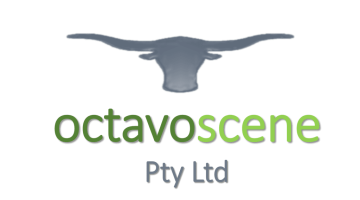Empowering Animal Health & Feedlot Success Practical veterinary solutions and trusted medicines for South African livestock producers.
Recent Issues

Foot & Mouth Disease – Vhembe Outbreak & Surveillance Update
Introduction & Summary On 7 January 2019, an outbreak of Foot and Mouth disease (FMD) was confirmed in cattle in the Vhembe district of Limpopo Province. The outbreak occurred in the high surveillance area of the FMD Free Zone, immediately adjacent to the protection zone. The outbreak was reported to the World Organisation for Animal Health (OIE) and as a result South Africa lost its FMD free zone without vaccination status. Map 1: Location of the FMD Outbreak in the FMD Free Zone of South Africa Outbreaks Reported Up to 15 February 2019, 5 positive locations have been confirmed by the Transboundary Animal Disease programme of Onderstepoort Veterinary Research. It is reported to the OIE . These locations are all in close proximity within the Disease Management Area that was declared in Limpopo Province. The affected animals are cattle kept in rural villages with communal dip tanks and grazing. Control Measures Implemented A Disease Management Area was declared and the details published in the Government Gazette. This area is enclosed by the R81 Road, the R36 Road, N1 and the R524 Road. Map 2: Area defined as the FMD Outbreak Management Area A Joints Operations Committee (JOC) was establish. And meets on a daily basis, consisting of Traffic, Departmental and District Disaster Management, Police, Industry (The National Animal Health Forum, Feedlot Association) and Provincial and DAFF veterinary officials. The JOC was facilitated the placement of 16 road blocks at strategic points. A Veterinary Operations Committee (VOC), which meets daily, was […]

Rift Valley Fever
Rift valley fever is viral disease of sheep, goats and cattle, transmitted by mosquitoes.The disease is characterized by causing abortions and deaths in young animals, and can have catastrophic consequences in naïve herds.Outbreaks seem to occur in cyclical patterns, once every 9-11 years (on average), during wet rainy periods. Late summer is usually the peak time when clinical disease is seen in an outbreak.The agricultural and veterinary community is of opinion that South Africa is the brink of another impending outbreak, very possibly this coming summer, and vaccination of all susceptible animals are advised. Remember to order vaccines before the summer (to ensure availability) and vaccinate at the start of spring. Since the disease is transmitted via mosquitoes, animals near large water bodies tend to be more exposed, since mosquitoes hatch in large numbers in water, especially in wet warm conditions. It is also important to remember that RVF is a Zoonoses, in other words, humans can also contract the disease. Although most people will recover after two weeks of flu-like symptoms, it can also cause severe illness, meningitis, blindness, liver failure and even death. Be sure to take protective measures (clothing, goggles, gloves, etc.) when working with animals and/or carcasses that possibly have RVF. Since the disease is transmitted via mosquitoes, animals near large water bodies tend to be more exposed, since mosquitoes hatch in large numbers in water, especially in wet warm conditions. It is also important to remember that RVF is a Zoonoses, in other words, humans […]
Redgut
Redgut (rooiderm) is a disease seen in feedlot cattle, characterized mostly, by sudden death and pronounced dark red small intestines seen at the necropsy (refer to figure1). The condition is referred to by many names, such as Jejunal Haemorrhage Syndrome, or Haemorrhagic Bowel Syndrome of Cattle, but most commonly referred to in South Africa as Redgut/Rooiderm. The scientific name however is Clostridium Enterotoxaemia, referring to the offending agent and its mechanism of action (destruction?) inside the animal. Redgut is a sequela of acidosis. Although it is important to note that not all animals that died from acidosis will have redgut, all animals that contract redgut will have a degree of acidosis. The exact mechanism of the disease is uncertain, but seems to be connected to an overgrowth of Clostridium perfringes Type A.Once an animal has acidosis, and the acidic content from the rumen reaches the abomasum and small intestines, it triggers an overgrowth of Clostridium perfringes Type A (a normal commensal bacterium in the bovine intestinal tract). These bacteria then release a toxin (enterotoxin), that severely damages the intestinal tract, causing excessive bleeding, cell death and sloughing of the tissue (see figure2). The damaged intestinal wall leads to the loss of electrolytes and the absorption of the offending toxin into the bloodstream. This induces toxic shock and severe metabolic disturbances that leads to death.There have been attempts to treat affected animals, with fluid-and electrolyte therapy, activated charcoal, and even surgery, all with very little success. In a feedlot […]
About
Learn more about us.
Our Suppliers
View our Suppliers.
Blog
Read our news & stories.
Contact
Questions or suggestions?










